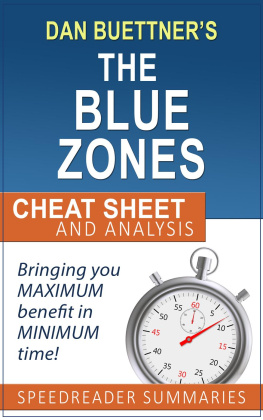James Osterhaus - Naked Conflict: How to Navigate the Blue and Red Zones of Conversation
Here you can read online James Osterhaus - Naked Conflict: How to Navigate the Blue and Red Zones of Conversation full text of the book (entire story) in english for free. Download pdf and epub, get meaning, cover and reviews about this ebook. year: 2014, publisher: Familius, genre: Art. Description of the work, (preface) as well as reviews are available. Best literature library LitArk.com created for fans of good reading and offers a wide selection of genres:
Romance novel
Science fiction
Adventure
Detective
Science
History
Home and family
Prose
Art
Politics
Computer
Non-fiction
Religion
Business
Children
Humor
Choose a favorite category and find really read worthwhile books. Enjoy immersion in the world of imagination, feel the emotions of the characters or learn something new for yourself, make an fascinating discovery.

- Book:Naked Conflict: How to Navigate the Blue and Red Zones of Conversation
- Author:
- Publisher:Familius
- Genre:
- Year:2014
- Rating:4 / 5
- Favourites:Add to favourites
- Your mark:
- 80
- 1
- 2
- 3
- 4
- 5
Naked Conflict: How to Navigate the Blue and Red Zones of Conversation: summary, description and annotation
We offer to read an annotation, description, summary or preface (depends on what the author of the book "Naked Conflict: How to Navigate the Blue and Red Zones of Conversation" wrote himself). If you haven't found the necessary information about the book — write in the comments, we will try to find it.
James Osterhaus: author's other books
Who wrote Naked Conflict: How to Navigate the Blue and Red Zones of Conversation? Find out the surname, the name of the author of the book and a list of all author's works by series.
Naked Conflict: How to Navigate the Blue and Red Zones of Conversation — read online for free the complete book (whole text) full work
Below is the text of the book, divided by pages. System saving the place of the last page read, allows you to conveniently read the book "Naked Conflict: How to Navigate the Blue and Red Zones of Conversation" online for free, without having to search again every time where you left off. Put a bookmark, and you can go to the page where you finished reading at any time.
Font size:
Interval:
Bookmark:

Red Zone
Blue Zone
Red Zone
Blue Zone
Turning Conflict into Opportunity
Jim Osterhaus, Ph.D.,
Todd Hahn, Joseph Jurkowski
Copyright 2015 by Jim Osterhaus, Todd Hahn, and Joseph Jurkowski
All rights reserved.
Published by Familius LLC, www.familius.com
Familius books are available at special discounts for bulk purchases for sales promotions, family or corporate use. Special editions, including personalized covers, excerpts of existing books, or books with corporate logos, can be created in large quantities for special needs. For more information, contact Premium Sales at 559-876-2170 or email specialmarkets@familius.com
Reproduction of this book in any manner, in whole or in part, without written permission of the publisher is prohibited.
Library of Congress Catalog-in-Publication Data
Paperback ISBN 978-1-939629-63-0 Hardcover ISBN 978-1-942672-77-7 Ebook ISBN 978-1-942672-04-3
Printed in the United States of America
Edited by Lindsay Sandberg Cover design by David Miles Book design by Lindsay Sandberg
2014959242
First Edition

Contents
Part one
Conflicted Beginnings
The Real Question
Red Zone, Blue Zone
The Real Problem
A Step Toward Change
Lessons in Prison
Styles in Leadership
A Time of Transformation
Part Two
Conflict: Friend or Foe?
The Blue Zone
The Red Zone
The Same People Keep Showing Up in My Life
Part One
Two of the coauthors, Jim and Todd, were once in prison together.
But only for a day.
Several years ago, we spent the day in Solano California State Prison in Vacaville, California, visiting a friend, David, who had been influenced by an earlier book we had written about how to thrive innot just survive inconflict.
David, now reintegrated into society outside prison walls, was an inmate and, at that time, was leading classes for other inmates on the topic of conflict resolution, largely based on our book.
He had invited us there to meet some of the hundreds of students he had led in exploring the principles of peacemaking.
On the appointed day, we went to the prison, passed through a gauntlet of metal detectors, and received our plastic whistles.
Plastic whistles? we asked.
Yes, said the corrections officer, with a smile. In the event that you get in a hostage situation or some such predicament, California state law says we cant negotiate for your release. If you sense trouble, blow your whistle as loudly as you can and hopefully an officer can get to you before things escalate.
We looked at each other.
It was too late to turn back. We walked into the heart of Solano Prison, and our worlds changed forever.
As we interacted with the men David was influencing, we saw that these people had internalized the principles of our book like no one else we had ever met.
These were former gang membersviolent criminals, in many casespeople who had been excluded from society. And they were wise beyond belief. They brought tattered and underlined copies of our book to the meetings we attended, quoting passages and then teasing out the principles and applying them to their own lives and experiences.
They talked about their hopes for rejoining societyhopes and fears. They were determined that this time they would know how to head off the conflicts that, in many cases, had landed them in Solano. They got it, and as the day transpired, they became our teachers.
Conflict is common to everyoneparents, children, business leaders, public servants, pastors, inmates. We all face conflict. We can choose to ignore it, try to defeat it, or let it defeat us. We can try to simply survive it somehow. Or we can choose to see conflict for what it isa revealer of our true selves and a rare opportunity for growth and changeand leverage it as an experience that will help us to thrive.
Weve seen these principles play out in therapy sessions and in boardrooms, in the halls of churches and in agencies of the federal government, on playgrounds and in penitentiaries. Weve seen men and women learn how to embrace conflict, see it as their ally, and learn to lead others wisely and well. This new perspective changes everything, just as our lives were changed that day at Solano.
We offer this story, and these principles and exercises, in the hope that you will learn to thrive through conflict as well, and that all our lives will be better because of it.
Chapter One
Conflicted Beginnings
M ichael OReillys family emigrated from Ireland when he was a teenager, and he later worked his way through college in the Chicago area. He married and settled in the suburb of Elizabethton. Two years later, his first son, Bob, was born.
Michael had always been good with his hands and his brain, and he became a highly respected owner of a small plumbing company. But his ambitions were bigger than a few employees and the residential trade. He was able to beg and borrow enough money to first found a plumbing supply company and to later purchase a firm that manufactured those supplies. The firm was located in Massachusetts, and Michael moved the family there when Bob was sixteen years old. Due to Michaels hard work and business savvy, the company prospered, as did the OReilly family.
Michael had always assumed that Bob would join the family business and, after college, he did. Bob worked his way through the ranksMichael did not believe in nepotismand eventually it was clear that Bob would succeed his father as CEO, though the transition wasnt going as smoothly as Bob might have hoped. The plan had been for Bob to become acting CEO, the CEO-designate, and for Michael to step into a senior adviser role until Bob adjusted to his new responsibilities. Bob was now CEO, but each new day at the office proved to him that Michael had not stepped down enough.
The Daily Conflict
Even though he had spent most of his life in western Massachusetts, Bob OReilly had never gotten used to the cold. And this February afternoon was bitingly chilly.
Bob turned his coat collar up against the chill as he made his way across the parking lot toward his office at OReilly Plumbing Manufacturers. His mind was filled with the question of the succession plan and his need to establish himself as the man in charge if the company was going to progress.
Even though Michael said all the right things, he had a commanding presence and hard-won respect from his employees. It was clear to thirty-five-year-old Bob that many of his team of three hundred employees still believed that the seventy-year-old patriarch was the man in charge.
Worse, Bob believed that his father was doing things to contribute to this sense. He had a tendency to question his sons decisions in meetings, and sometimes made joking side comments about the way we always used to do things around here.
The plan had been for Michael to serve in an advisory capacity for eighteen months after Bob got the title of CEO-designate, and, under normal circumstances, Bob would have gritted his teeth and waited the old man out. But the last eighteen months had been the most difficult in the firms history. The downturn in the US economy pushed home builders who bought the firms products to go out of business and home owners to put off plumbing upgrades. On top of losing customers, several of the firms biggest competitors had begun outsourcing manufacturing functions or even moving their operations to Mexico, where labor was a fraction of the cost. Truth be told, the company was on the rocks.
Font size:
Interval:
Bookmark:
Similar books «Naked Conflict: How to Navigate the Blue and Red Zones of Conversation»
Look at similar books to Naked Conflict: How to Navigate the Blue and Red Zones of Conversation. We have selected literature similar in name and meaning in the hope of providing readers with more options to find new, interesting, not yet read works.
Discussion, reviews of the book Naked Conflict: How to Navigate the Blue and Red Zones of Conversation and just readers' own opinions. Leave your comments, write what you think about the work, its meaning or the main characters. Specify what exactly you liked and what you didn't like, and why you think so.








